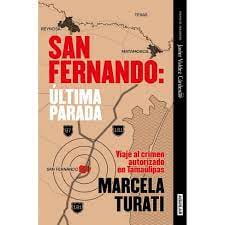A Review of Cuban Privilege: the Making of Immigrant Inequality in America

A Review of Cuban Privilege: the Making of Immigrant Inequality in America by Susan Eckstein (Cambridge University Press, May 2022)
If anyone had any doubts that Cubans were treated exceptionally well by the United States immigration and welfare authorities, relative to other immigrant groups and even relative to groups of U.S. citizens, they will be disabused of their notions after reading Susan Eckstein’s exhaustively researched Cuban Privilege: the Making of Immigrant Inequality in America. Her research makes a strong case for the fact that no other immigrant group received the privileges received by Cubans.
Eckstein traces immigration policy towards Cubans after the Cuban Revolution under 12 different U.S. presidents: Eisenhower, Kennedy, Johnson, Nixon, Ford, Carter, Reagan, Bush Sr., Clinton, Bush Jr., Obama and Trump. She also tracks Congressional legislation towards Cubans during the period 1959-2020. A thorough command of the secondary literature, combined with archival research into the documents of U.S. agencies such as the State Department, the Congressional Record, the presidential libraries of multiple U.S. presidents, make this work an impressive scholarly achievement.
Eckstein argues that the U.S. government attempted to use immigration policy for foreign policy purposes by favoring the entrance of Cuban “refugees” or “asylees” into the United States. The central aim of the intervention was a failure, in that it did not achieve the goal of overthrowing the revolutionary regime. However, once initiated, the privileging of Cuban immigrants over other immigrants continued, without interruption, until the Obama administration in the 21st century. Eckstein frames her own argument as a “path dependence” argument. Once initiated, the Cold War utilization of immigration policy towards foreign policy ends created a track from which it was very difficult to derail, and Cuban privileging continued even after the collapse of State Socialism and the Soviet Union which began with the fall of the Berlin Wall in 1989.
The ”privileging” took essentially two forms: the facilitation of immigration and acquisition of legal Permanent Resident Status for Cubans, on the one hand, and the extension of state assistance to Cubans once they were in the United States. Concerning the facilitation of immigration, the Johnson administration facilitated through “Freedom Flights” negotiated with the Cuban government, the movement of approximately 270,000 Cubans to the United States. The biggest difference between Cubans and all other migrants is that they were “paroled” into the United States as “ refugees” or “ asylees” automatically. While immigrants requesting political asylum need to prove individually that they were persecuted in the home country, in the case of Cubans merely being Cuban sufficed to grant the immigrant political asylum in the United States. This privilege was even extended to Cubans living in countries where they faced no persecution, such as Spain or Mexico.
From the Cuban point of view on the island, the emigration of Cubans was a double edged sword. On the one hand, it helped the Castro regime to get rid of hostile populations that may have chosen to exercise their voice rather than exit Cuba, but on the other it deprived the country of many professional and skilled workers. This early migratory wave was largely educated, middle class and 97% white. These well-off Cubans received many benefits once they arrived, ranging from relicensing programs to transition Cuban medical doctors and nurses into jobs in the United State, to the extension of SSI (Supplemental Security Income), to special refugee benefits that exceeded the welfare benefits received by U.S. citizens, against which African Americans in Florida bitterly complained.
For perspective, I wish to add the following fact: On April 21, 2022, the United States Supreme Court (with only Sonia Sotomayor dissenting) decided in the case United States v. Vaello Madero against the extension of SSI benefits to residents of Puerto Rico. People born in Puerto Rico have been U.S. citizens for 105 years as of 2022. By contrast, Cuban immigrants arriving in Florida were entitled to SSI upon arrival! The privileging of Cubans has existed not only with respect to other immigrants, but also relative to some groups of U.S. citizens.
Once the initial cohorts of middle class Cubans settled in Miami, they prospered and they created their own lobbies. The most successful lobby was the Cuban American National Foundation whose leader Jorge Mas Canosa, was consulted by U.S. presidents on Cuban immigration policy. Under Reagan, the US State Department went to far as to grant a front of the Cuban American National Foundation, the Cuban Exodus Relief Fund, the capacity to admit Cubans into the United States through “the only privately run [immigration] program in US history,” (319) and to grant them refugee status even though they were not fleeing persecution.
From Eisenhower to the presidency of the second Bush, the privileging of Cuban happened as inexorably as a law of physics. Even when presidents initially opposed some aspect of Cuban privilege, in practice they ended up extending the “horizontal” (expansion of beneficiaries) and “vertical” (expansion of benefits) entitlements of the Cuban immigrants.
Eckstein distinguishes the “old” from the “new” Cuban wave of migration. Especially after the Mariel boatlift brought 125,000 Cubans to the United States in 1980, the social composition of the immigrants changed. The new Cubans were more working class and non-white. The representatives of the old Cuban community sought to distance themselves from the new Cubans, and stopped defending Cuban entitlements with the same vigor as before. The Cuban American lobby weakened, and when the Obama administration moved to treat Cubans as the United States treats any other immigrant group, no stiff resistance was presented by the organized Cuban lobby that represented the old community while the new community lacked lobbyists and representatives altogether. Thus ended, under the Obama administration, the privileging of Cubans. Trump in turn applied to the Cubans the same fiercely anti-immigrant logic he applied to other Latino immigrants or Muslims. In this, Trump’s nativism has been consistent.
The book makes comparisons throughout to Haitians and Dominicans and their relation to the U.S. immigration regime. I cannot detail them here, but the overall thrust is that neither group received the red-carpet reception of the Cubans, despite political and economic turmoil in their countries.
The Cubans appear to be exceptional even with respect to other Cold War refugees, such as those arriving in U.S. shores after the war in Indochina. Thus it would seem that while Cold War factors are important in explaining the Cuban exception, they cannot account for to totality of the difference between Cubans and other groups.
I’m not an expert in immigration, but I do have a set of questions having to do with colonialism. Cuba occupies a special place in the U.S. imagination and in the behavior of the U.S. state. From Thomas Jefferson considering Cuba the natural southern boundary of the United States that eventually would be annexed, through the attempts of the Cotton Kingdom slave-owning aristocracy to make out of Cuba one or even several slave-owning states to increase Southern power in the US Senate, through the increase of filibustering expeditions in the 1850s to realize what the historian Robert E. May has called “the Southern Dream of Caribbean empire,” the annexation of Cuba seemed imminent at many points of U.S. history. During the War of 1898, only the formidable power of the farm lobby was able to prevent the annexation of Cuba. Together, the more than 20 states that produced beet sugar, Texas and Louisiana as sugar cane producers, plus the more than 15 states that produced tobacco, emphatically did not want the annexation of Cuba because the uniformity clause and commerce clause of the Constitution would translate into tariff-free entrance of Cuban sugar and tobacco into the U.S. market. President Theodore Roosevelt’s attempts to secure a “reciprocity” treaty with Cuba, establishing mutual free trade, were soundly defeated by Congress. Yet Cuba became part of a colonial and semi-colonial sphere of the United States comprising the Philippines, Puerto Rico, Guam, the U.S. Virgin Islands and Hawaii.
The integration of Cuba into the administrative and commercial structures of the U.S. empire was exceptional. In 1914, U.S. bankers boasted that you could transfer a railroad car from Florida into a ferry carrying 30 wagons, and unload it into railroad tracks in Havana that were the same gauge, and therefore continuous, with the U.S. railroad system. This phenomenal infrastructural integration meant that “sugar and molasses may be loaded at the Cuban mills and forwarded through to destination in the United States without transfer; while the heavy machinery from the United States can be loaded at place of manufacture and carried through to its Cuban destination without transfer,” the Guaranty Trust of New York noted in Cuba (1916, p.54).
During World War 1, when sugar became a strategic war material, the Sugar Equalization Board headed by future U.S. president Herbert Hoover, administratively achieved the sale of Cuban sugar at below market prices to assist in the U.S. war effort. In the throes of the Great Depression, when the U.S. government created a system of sugar quotas to regulate the overproduction of sugar in the beet- and cane-producing states of the United States, plus Hawaii, and also the Philippines and Puerto Rico (both then ruled by U.S. presidentially appointed governors) the so called “independent” Republic of Cuba also received its quota allocation by the US government. In many ways, Cuba was within this “colonial polity,” and a nation-based framework seems insufficient to explain Cuban exceptionalism.
This point is emphatically articulated in Morris H. Morley’s book The Imperial State: the United States and Revolution and Cuba, 1952-1986, reviewed by Eckstein in 1989 in Contemporary Sociology, but not quoted in Cuban Privilege. Ada Ferrer’s recent Pultizer Prize-winning book Cuba: an American History, suggests how much the Cuban issue is “internal” to the United States. This longer specific colonial dimension of Cuban history with respect to the United States would surely need to be incorporated to complete the explanation of the exceptional treatments the Cubans have received in the U.S. polity. Looked at from the optic of gradated rights within a colonial orbit—such as the question of why Algerian Jews received French citizenship but not Moroccan Jews, or why U.S. citizenship was extended to Puerto Ricans but not to Filipinos—perhaps the Cuban exception is not as exceptional as it looks when examined strictly within a framework of nation-states as opposed to an imperial/colonial framework.
Nevertheless, Cuban Privilege is an exceptionally well-researched work and it will no doubt become the book of record concerning Cuban immigration to the United States.
César J. Ayala is a Professor of Sociology at UCLA California.
Related Articles
A Review of Default: The Landmark Court Battle over Argentina’s $100 Billion Debt Restructuring
In February 2019, I found myself serving as the special attorney general for the then newly recognized interim government of Venezuela, tasked with addressing more than 50 claims before the U.S. courts stemming from the $140 billion debt inherited from Hugo Chávez and Nicolás Maduro.
A Review of Until I Find You: Disappeared Children and Coercive Adoptions in Guatemala
A student in my “Introduction to Cultural Anthropology” course at the University of Delaware approached me several weeks ago, after hearing about my long-term research in Guatemalan communities, to tell me that they were born there, in Guatemala.
A Review of San Fernando: Última Parada, Viaje al crimen autorizado en Tamaulipas
One of Mexico’s best investigative journalists, Marcela Turati, takes readers to terrorized and traumatized San Fernando, a town known for dozens of mass graves, and exposes the depths of criminal brutality and official corruption that hid the bodies and the truth for years.




